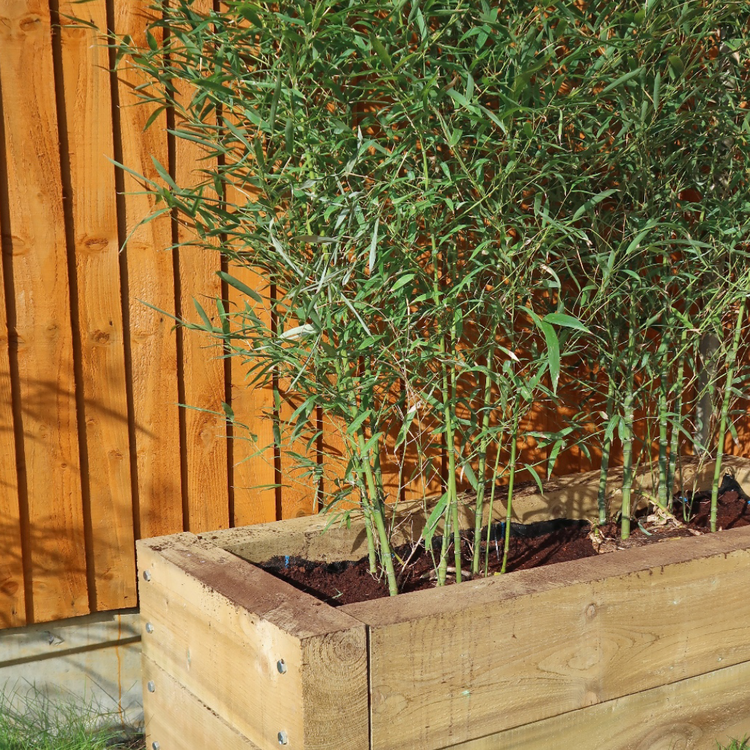Let's Talk Bamboo
More Importantly, How to manage bamboo. Bamboo is more fun to pronounce than it has any right to be. It is a beautiful plant, very unique in its own way. It's often seen as a great addition to any garden or landscape, but effective bamboo containment is critical to control its spread.
While bamboo has many qualities, screening and providing privacy, its roots known as rhizomes spread faster than most other plants, which are aggressive, ultimately dislodging pavings and interfering with other built structures. A rhizomatous perennial, bamboo has a comparatively shallow root system whose habit is to spread laterally instead of producing vertical taproots like many trees.
The Bamboo Variety
There is a lot to understand about bamboo before making it an addition to your garden. Bamboo comes in plenty of varieties (around 1,400 species). All bamboo can spread, and even the clump-forming bamboo can become a menace in the wrong situation.

Runners vs Clumpers
Bamboo roots are divided into runners and clumpers. Akin to their name, runners spread extensively, parallel to the ground, and can extend 8 metres or more. As far as containment goes, running bamboo is the most difficult to handle. It is only after runners have established that shoots start appearing above ground. For this reason, waiting for the shoots to appear so that they can be controlled is fighting a losing battle. However, clump-forming bamboo is more compact and does not spread as much or as rapidly, sometimes making them easier to remove or control. That said all bamboo must be managed and ideally contained, even clump-forming varieties.

Popular ways of Containing Bamboo
There are several possible approaches to effective bamboo containment to control the spread of bamboo, each with a varying degree of success:
- Installing bamboo root barrier around the plant (recommended)
- Digging a trench around the bamboo growth, so the bamboo rhizome is shallower than the trench (not practical)
- Planting bamboo in a trough lined with a suitable root barrier (ideal if done correctly)
- Manually controlling the root spread by pruning (not practical as the bamboo is likely to win!)
What is a Bamboo Barrier?
Well, it is exactly what it sounds like. A barrier is placed around the bamboo growth to prevent the roots from spreading outside the desired area. A trench is dug around the area, making sure it is deeper than the bamboo roots.
The question is, what is the barrier made out of? There have been wooden, concrete, and metal barriers used, with all proving ineffective over time. Wooden barriers are prone to rotting, concrete is prone to cracking, and metal is prone to rust (which in itself is a health hazard). With all these materials, the strong root tips of the bamboo eventually find their way through and continue spreading.
The solution? A reinforced High-Density Polyethylene (HDPE), the bamboo barrier.
Choosing the Right Bamboo Root Barrier
The HDPE root barrier blocks the roots from growing laterally in a particular direction. It is a flexible root barrier available in a range of sizes, with varying widths depending on your specific requirements. The best bamboo root barriers to manage containment have the following characteristics;
- Tensile Strength: Choose a barrier with over 1100 N resistance
- Puncture Resistance: the CBR value must be over 5000 N
- UV resistance: Bamboo barrier must protrude above ground, and at this point, you need a barrier with resistance to degradation from sunlight
- Flexibility: whilst root barriers must be strong, it is important to select a flexible one that can be worked around buried objects, foundations, and other built structures
Installing a Root Barrier to manage Bamboo
Preparation is essential for a successful root barrier installation. For example, how deep do the roots go into the ground? Whatever the answer to this question is, you need to add about 20cm, giving the ideal depth of the barrier. For example, roots that go 30cm deep require a minimum barrier depth of 50cm. This additional depth makes sure that the roots do not find a way around the barrier even if they try going deeper into the ground. In addition, rhizomes can survive above ground and will hop over a root barrier if not installed or regularly inspected. An up stand of 10cm is therefore recommended. With this established, the installation process is as follows:
- Dig a trench around the bamboo growth or the desired area. This trench should be 10cm shorter than the length of the barrier to leave a part of it above the ground.
- Place the barrier inside the trench, making sure all individual parts of the barrier overlap at least 10cm. Then, use HDPE sealant tape both vertically and horizontally to connect the seam.
- Refill the trench. The root barrier should be inspected annually or bi-annually for damage or for roots that have worked themselves over the top of the barrier. Follow this simple process, and congratulations! You have effectively installed a root barrier for the effective containment of bamboo.


